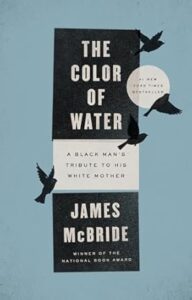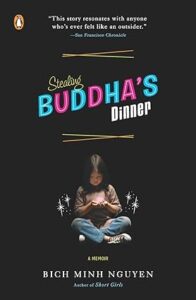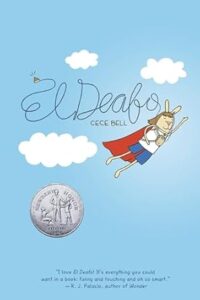I love memoir and autobiography as a genre. Throughout my time as a reader, they have played a key role in helping me discover, tweak, and name things about my own identity; these books have also unlocked for me a secret glimpse into the way that God has wonderfully created other people. Rudine Simms Bishop famously coined this particular power that books have to act as “mirrors, windows, and sliding glass doors”:
Books are sometimes windows, offering views of worlds that may be real or imagined, familiar or strange. These windows are also sliding glass doors, and readers have only to walk through in imagination to become part of whatever world has been created or recreated by the author. When lighting conditions are just right, however, a window can also be a mirror. Literature transforms human experience and reflects it back to us, and in that reflection we can see our own lives and experiences as part of a larger human experience. (Bishop x)
As a former high school English teacher, church youth group leader, professor who regularly teaches about adolescent development, and—most importantly—a mom of two middle school daughters, I am keenly interested in the ways that stories can play a part in shaping our young people’s perspectives. I want them to examine the stories that they tell themselves about their own identities and the stories they believe about others, to deeply explore what it means to be human and how to live faithfully with those who differ from us. I believe that memoir and autobiography are tools made fittingly for that task, and this article is dedicated to sharing ideas about how to use these genres, as well as offering up a few titles that may work well in a variety of classrooms as mirrors, windows, and sliding glass doors.
First, these texts can serve as great mirrors for students to explore their own identities at this crucial time in their lives. At this point in their development, adolescents are often “trying on” different versions of themselves, cycling through friendships and hobbies, considering future school or career plans, and looking for affirmation that they are doing OK—that who they are is acceptable and lovable. Autobiography and memoir can serve as wonderful mentor texts for students in these endeavors, allowing students to study how authors crafted their own life stories, how they organized their experiences around themes and ideas, and how they came to accept themselves or work through their challenges. Students may be able to see their own life circumstances in some cases, but more often, they may be able to identify with feelings, perspectives, or epiphanies that authors share, reinforcing that they are not alone or teaching them a new approach to a trial. The reading experience can lead to powerful writing experiences in these cases, offering opportunities for students to write their own stories in unique ways, to explore experiences that have defined them, and to come to conclusions about their own identities in Christ. Practicing daily quick writes in the style of an autobiographical text or around the topics it addresses is a wonderful way to generate student ideas for these longer writing pieces.
We are robbing students of the chance to see the reality of God’s diverse creation if we limit our texts to stories from one perspective.
In addition to seeing and thinking about their own life experiences, it is also important for our students, many of whom have had homogenous home and school environments, to encounter and contemplate diversity through their reading. While children from dominant social groups (such as white middle class Americans) have had many mirror-like reading experiences, they suffer a disadvantage to their perspective when not exposed to the lived experiences of other groups. Bishop passionately argues that these students “need [diverse] books as windows onto reality, not just on imaginary worlds. They need books that will help them understand the multicultural nature of the world they live in, and their place as a member of just one group, as well as their connections to all other humans” (xi). We are robbing students of the chance to see the reality of God’s diverse creation if we limit our texts to stories from one perspective. Additionally, it may lead students to have an “exaggerated sense of their own importance and value in the world” if they are only reading reflections of themselves (Bishop xi). Autobiographies and memoirs are a wonderful antidote to this skewed reading diet, as many of them offer windows and doors into unfamiliar but real-life experiences of the authors. They allow readers to build empathy and comradery that will hopefully carry into real-life encounters with “the other”—people from different walks of life who share our humanity.
Of course, the key to teaching this genre well is picking the right book for your students. The reviews shared here were written by my students in Education 354: Methods of Teaching English at Dordt University in the fall of 2024, with each of them submitting a review of a relevant memoir, autobiography, or autobiographical fiction book that helped them understand “the other,” and in turn, themselves. The variety of experiences represented in these books includes multiple ethnicities, socioeconomic statuses, physical abilities, religious affiliations, and native countries. They are written as vignettes, graphic novels, and plain prose. They are suitable for different grade levels and a variety of reading abilities. Simply said, they represent the beautiful diversity of human experience, and we are excited to share them. We humbly hope that these suggestions serve you well as you help students look in mirrors, peer through windows, and walk through some sliding glass doors.
[A]longside students, we can work diligently toward seeing God’s world more clearly, loving those around us more authentically, and developing our identities more fully in Christ.
We know that these stories alone, and even the instruction that we as teachers may dutifully design around them to shape student learning, will not always move students toward the outcomes we desire. We are human, and sin still taints the world, so we will still see ourselves and others imperfectly. But alongside students, we can work diligently toward seeing God’s world more clearly, loving those around us more authentically, and developing our identities more fully in Christ. These things are the worthy end goals of lesson plans and units, the meaningful takeaways that standards, outcomes, and scaffolds should build toward. And someday, perfection will come: “For now we see only a reflection as in a mirror; then we shall see face to face. Now I know in part; then I shall know fully, even as I am fully known” (1 Cor. 13:12). What a wonderful promise to cling to in this Kingdom work!
Biography: Dr. Abby De Groot serves as an associate professor of Education at Dordt University. Motivated by her own experiences with the transformative power of exceptional teachers and effective pedagogy, she is committed to preparing future educators who can make a lasting impact on students’ lives. Formerly a high school English teacher and curriculum coordinator, her research interests focus on adolescent literacy, literacy across content areas, and teacher action research.
The reviews shared here were written by my students in Education 354: Methods of Teaching English at Dordt University

The Color of Water by James McBride
Reviewed by Ashtyn Billings
Suggested Grade Level: 9–10
Poignant Excerpts: “I felt like a Tinkertoy kid building my own self out of one of those toy building sets; for as she laid her life before me, I reassembled the tableau of her words like a picture puzzle, and as I did, so my own life was rebuilt” (191).
“God is the color of water” (51).
Summary: The Color of Water tells the story of James McBride’s gradual growth and understanding of his heritage, identity, and family. Throughout the memoir, the narrative alternates between the perspective of the author, James, and his mother, Ruth. Ruth, a white Jewish woman, married a Black man who unfortunately passed away when James was very young. She raised twelve children, the youngest being James, in a predominately black, poor neighborhood in Harlem, Massachusetts. With James’s mother being white and his father deceased, James wrestles with the confusion of his identity. Throughout the course of the text, James reveals his family’s legacy through the stories he learns from his mom and explores his identity as an African American person.
Review: The Color of Water is a wonderful resource to use in the classroom because of its unique perspective on race and identity. Throughout the text, James McBride recounts his experience wrestling with his identity as a black man with a white mother. In a diverse classroom, this could be the story for many students. There is a sense of empowerment that comes with seeing yourself in a story. In this text, students may be able to relate or connect with James’s experience as he navigated life as a black man.
Reading The Color of Water allows teachers and students to be exposed to diverse experiences and understand the “other.” In this text, there are a few different diversities to note: racial, religious, and generational. Teachers can use this text to teach themes of race and identity as they read through James’s experiences as a bi-racial man. They can also teach themes about diversities in religion while considering Ruth’s journey to faith. The themes of generational diversity can be taught as the story’s narrative switches between the point of view of James, a young boy, to his mother, Ruth. Through each of these diversities, teachers can encourage their students to seek to understand differences, whether that be their own or those they notice around them. The Color of Water allows for many conversations about race and identity to come out of reading and discussing, which lets students reflect on how to understand the “other” in light of the text.
The text is also written in a unique format, which allows for teachers to teach author’s craft. The dual perspective narrative is a key component to the structure of this story and should be studied and learned from. Teachers may use the dual perspective narrative to teach lessons on point of view, flashbacks, and timelines that are out of order. The dual perspective also allows for teachers to emphasize how tone gives clues to the reader that the narrator has changed. Because one narrator is older than the other, the tone of their speech is different and can be studied to help students analyze text in an advanced manner.
In conclusion, The Color of Water, by James McBride, is a great resource for teachers to provide for their students to consider diversity, to study authors’ craft through a dual perspective narrative, and to learn how to understand the “other.”
Biography: Ashtyn Billings is a student at Northwestern College in Orange City, Iowa (taking a course at Dordt this semester). She will receive her Bachelor of Arts degrees in both secondary education and English in 2025. She is eager to unlock students’ minds to the power of story.

Stealing Buddha’s Dinner by Bich Minh Nguyen
Reviewed by Wenwen Fan
Suggested Grade Level: 11–12
Poignant Excerpt: “When I think of Grand Rapids I think of how much time I spent trying to make real the dream of the blond-haired girl with a Betty Crocker mother and a kitchen to match” (247).
Summary: Stealing Buddha’s Dinner is a memoir by Bich Minh Nguyen that explores her struggles to fit into American society as a Vietnamese immigrant. Through the lens of food, Bich examines the contrasts between her Vietnamese heritage and American culture. At the start of the memoir, her family moves to Grand Rapids, Michigan, as refugees after the Vietnam War. She feels isolated both at school and at home. At school, her Vietnamese lunches set her apart from her predominantly white classmates. At home, her father’s busy work schedule leaves little room for emotional connection. Bich admires the American lifestyle and becomes fascinated by foods like peanut butter sandwiches, Pringles, Jell-O, and Toll House cookies. She often compares herself to her sister, Anh. They both navigate the complexities of their dual identities. Their grandmother, Noi, plays an important role in Bich’s life by upholding Vietnamese traditions through dishes like pho and by maintaining a Buddha altar. Initially, Bich feels embarrassed by these customs. However, as the memoir progresses, she gradually learns to appreciate her cultural heritage, embrace the richness of her identity, and find value in both her Vietnamese roots and her American experiences.
Review: Stealing Buddha’s Dinner is an excellent book for helping adolescents understand and appreciate other cultures. By reading the memoir, young readers gain insight into the struggles and complexities of living in American society as a young person from another culture. The memoir focuses on Vietnamese culture and introduces adolescents to Vietnamese food, religion, and traditions. Beyond these cultural elements, readers also come to see Bich as a unique individual with her own childhood memories and family relationships, rather than merely a representative of her culture. Her identity is shaped by both Vietnamese and American influences, which adds to the richness of her experiences.
Despite coming from a different background, readers may find Bich’s experiences relatable. Her feelings of not fitting in and her embarrassment about her social status are common struggles for many adolescents. These relatable moments can foster empathy, respect, and inclusivity among students and encourage them to better support classmates from different backgrounds.
A major theme of the memoir is cultural identity. English Language Learner (ELL) students especially may find parallels between Bich’s story and their own experiences of adjusting to a new culture and shaping their identities. Reading this memoir can benefit them by helping them reflect on their own challenges and triumphs. The memoir is also a rich source for studying symbolism. Foods from both Vietnamese and American cultures symbolize the two cultures Bich navigates. Her embarrassment over her grandmother’s Vietnamese food and her desire for American food reflect her struggle to fit in. This symbolism is reinforced through the chapter titles, which are all food-related and offer opportunities for students to explore these themes throughout the book.
Overall, Stealing Buddha’s Dinner is an excellent choice for introducing students to Vietnamese culture, especially its cuisine. Major themes in this memoir—identity, culture, isolation, and belonging—are important for adolescents. By reading about Bich’s challenges in adapting to American culture, students have an opportunity to develop empathy, respect, and inclusivity. The memoir is also rich in symbolism, making it a valuable resource for educators.
Biography: Wenwen Fan is a senior at Dordt University, majoring in secondary education with a focus on English language arts. She enjoys reading, writing, swimming, and running.

El Deafo by Cece Bell
Reviewed by Yisa Hu
Suggested grade level: 4–7
Poignant Excerpt: “But everything is still so new, and so different, for all of us. Most of the time we are lost, drifting along on our own planets. But we are together in the same universe, at least” (33).
Summary: Before turning four, Cece lived a happy life, playing with friends, watching TV with her family, and riding on her father’s bike. At four, she contracted meningitis. Although she recovered, she lost her hearing, making communication challenging without her hearing aids.
In kindergarten, Cece attended a school for deaf and hard-of-hearing children, where she felt a sense of belonging because her peers shared similar experiences. After kindergarten, her family moved, and Cece attended a regular elementary school. She wore a heavy hearing aid called the “phonic ear” to participate in class, and her teacher used a microphone to ensure she could hear the lesson. This device made her feel different and made fitting in difficult. Seeking a way to adjust, Cece imagined herself as a superhero, El Deafo, which gave her the confidence to face her challenges.
Cece started trying to build connections with her classmates. She encountered a range of reactions—some classmates, despite good intentions, made her feel pitied rather than understood, while others, unaware of her situation, seemed inconsiderate. Eventually, Cece found a true friend, Martha, who eased her loneliness and provided the companionship she needed.
Review: El Deafo is a graphic novel that will engage even readers who typically dislike books. With its illustrations and accessible language, Cece’s story draws readers into her journey of self-discovery, friendship, and overcoming loneliness. Adolescents often worry about appearance, fear standing out, or feel misunderstood. Cece’s story reassures them that everyone has value and is worthy of love.
Beyond self-acceptance, El Deafo encourages readers to develop empathy and understand those who require special assistance. It shows that good intentions may unintentionally embarrass or misunderstand others and highlights the importance of understanding and listening before offering support. It inspires students to consider caring for others with great awareness and kindness.
Overall, El Deafo is an excellent resource for teaching the graphic novel format while enhancing reading and writing skills. Its combination of text and illustration engages readers and strengthens critical thinking and comprehension.
Biography: Yisa Hu is a senior majoring in English secondary education. She is passionate about combining her love for teaching and literature to make literature accessible and relevant for different students.
This is an abridged version of this article. To read more, subscribe to the print or digital edition of Christian Educators Journal.